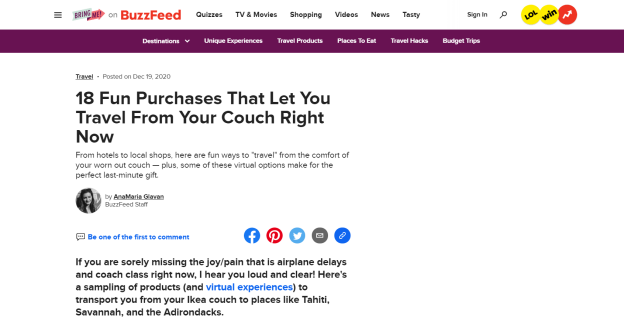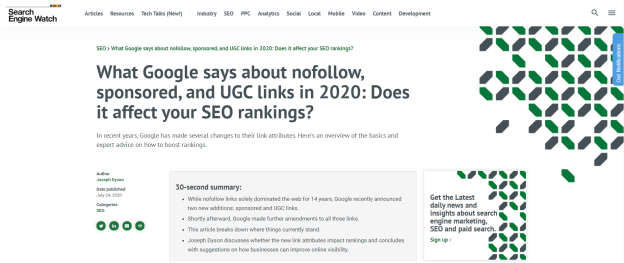Blog vs. Article: What Is the Difference?
Our SEO experts get asked this a lot! When we begin working with businesses that really want to get on top of SERPs, part of our game plan is content marketing. Blogs and articles make up a major part of it.
So we wanted to really break this down.
It’s safe to say that content marketing is still being touted as the crème de la crème of digital marketing. But where should you start: blogs or articles? What’s the difference between a blog and an article? And does it even matter?
We have to admit; in the last few years or so, the lines differentiating blog posts and articles have blurred. But these lines do exist.
One of the best ways to getting started is understanding the difference between blogs and articles in SEO. We’ll walk you through each key difference so you can customize your content marketing strategy accordingly.
Want to get more traffic on your blogs and articles? Fill out the form here and let’s get started:
Contents
- What is the Difference Between Blogs and Articles?
- Where Are They Posted?
- What Is the Length?
- What Is the Content Style?
- What Is the SEO Strategy
- What Is the Scope?
- Wrapping Up!
What is the Difference Between Blogs and Articles?
| HIGH-CONVERTING KEYWORDS | STRONGER HIGH-CONVERTING KEYWORDS |
|---|---|
| For attorneys: “Build a strong case” | For attorneys: “Build a strong case in Los Angeles” |
| For web developers: “Create an interactive website” | For web developers: “Create an interactive website in less than $100” |
| For realtors: “Buy your dream home” | For realtors: “Buy your dream home in SoHo” |
| For door manufacturers: “Replace your front doors” | For door manufacturers: “Replace your front doors and get a transom for free” |
Where Are They Posted?
The biggest difference in the article vs. blog or ‘what makes a blog different from an article’ debate is where they’re posted. Now that you have a good grasp on the difference between article writing and blog writing, let’s dive into their posting differences.
Blogs
How do you know if it is a blog? Blogs are posted on a company’s own blog page as opposed to a third-party platform. In essence, if your site features written content that’s supplemented by images and/or videos, it’s classified as a blog, not an article.
So what is the purpose of a blog? They’re posted on your site and give readers a glimpse into expert industry insight and recommendations. The idea is to create authority, increase lead generation and overall SEO value.
When you write blogs, you typically include key internal and external links that sort of connect your blog to other relevant pages and services that your readers might be interested in.
That way, you’re keeping them engaged longer to elicit a desired response—a purchase of a product/service, a call, etc. You’re essentially trying to convert them from a reader to a customer.
Blogs are super important from a conversation point of view. This is what makes a blog different from an article.
Articles
Unlike blogs, articles can be posted anywhere but on your own site. As a rule of thumb, we recommend choosing third-party websites that (a) are in the same niche, (b) are non-competitors, and (c) have a high domain authority (DA).
But wait, this doesn’t add up. Why would anyone contribute free content to another website, even if it isn’t a direct competitor?
Well, articles are posted with the intent of targeting high-quality, varied traffic.
Let’s say your blog page isn’t doing too well: it doesn’t have a high DA, which is resulting in less-than-impressive reach. In this case, posting articles is a great way to ride on another site’s coattails, so to speak. If they have a stellar DA, you’ll manage to engage a wide audience and rank higher on SERPs.
This article generally includes a CTA (call-to-action) that redirects readers to your site. It’s a win-win: you get high-quality traffic while nudging potential customers in your site’s direction for more conversions.
Articles are super important from a lead generation point of view.
What Is the Length?
Now that you have a good grasp on the basics of the blog and article difference, let’s dive into the intricacies. Over the years, blogs and articles have become very similar when it comes to length. Let’s call this a kind of convergence. Previously, articles were long and detailed (generally longer than 300 words) while blogs were short and to the point. Today, however, this demarcation has become increasingly blurred.
Blogs
Blogs are divided into two main categories based on length: short-form blogs and long-form blogs. In other words, you have full rein here; there are no rules.
Short-form blogs typically range from 400–800 words whereas long-form blogs are longer than 2000 words.
Now, choosing the right length comes down to your target audience and brand identity. We strongly recommend working with a content marketing team to dive deeper into your audience’s preferences. Are they interested in short, engaging, and witty blogs? Do they prefer long, insightful, and industry-rich blogs? Based on these insights, create a customized strategy.
Track each blog’s performance to gauge which blog length performs better than the others. Finalize your strategy and don’t forget to update it on a monthly or bimonthly basis as you collect fresh insights.
Recommended Read: How to Write a Blog That Ranks
Articles
Today, articles can be as short as 400 words or as long as 3000 words. Like blogs, there are no strict requirements you need to adhere to when it comes to length. Consult the website you’re partnering with beforehand. In some cases, certain websites only accept articles of a specific length.
To avoid facing rejection once your articles have been written and edited, get a strong grasp on the guidelines. If anything looks off, feel free to submit your articles to another website.
Double down on informative and engaging blogs and articles!
Our article and blog writers can help!
What Is the Content Style?
As a rule of thumb, make sure your blogs and articles have impeccable grammar, syntax, punctuation, and spelling. In addition, no matter what style you pick, your content should be unmistakably engaging.
Blogs
While you have complete leeway to switch things up, blogs are generally more informal and laid back than articles. This is another key difference between articles and blog posts. Stick to a casual and conversational writing style. This is a great way to establish a connection with your audience.
Remember, you’re not just writing blogs to increase traffic and boost conversions; you’re also focused on improving your brand identity. Since blogs are posted on your site, they’re an extension of your business. In essence, they reflect your brand identity.
If you opt for a formal and sophisticated style, chances are, your content will fail to resonate with your audience. Go for a casual tone to engage and retain your audience in the long run. Of course, you can still incorporate facts and figures into your blogs, so long as you don’t bore your audience.
Strike the perfect balance between “informing” and “engaging” your audience. Over time, this balance will help you write winning blogs that keep your audience coming back for more!
Articles
Since articles aren’t directly posted on your site, they can take on a more professional and formal tone. However, too much of anything can do more harm than good. Retain the balance we discussed earlier to ensure new visitors don’t click off the article halfway through.
As compared to blogs, articles also make use of facts and figures more frequently. Cite credible research to increase the value of your article. If a web user has never engaged with your business, they’ll feel more compelled to give your site a visit if your article is replete with unique industry insights and research.
Take a look at this article published on Search Engine Watch by Joseph Dyson, one of our Lead Generation experts. The tone is formal and informative, yet engaging.
And here’s how the article ends; it’s super simple and non-promotional.
Having said that, you can always change your tune if you’d like. While blogs and articles have unique content styles, there’s still lots of room for improvisation. If you want your articles to be more informal and laid back, feel free to do just that!
However, retain an air of professionalism amid the informality.
Remember, your articles will be a “first impression” of sorts for many people. With blogs, you’re engaging an audience that’s already familiar with your business. With articles, you’re targeting an entirely new audience. In essence, your articles should exude an air of credibility. This is a great way to ensure new web users take you seriously.
What Is the SEO Strategy?
We also want to talk about the difference between articles and blog posts in terms of SEO. No matter what content you’re producing, you should have a razor-sharp focus on optimization. If you fail to double down on on-page SEO, your content will rank poorly on SERPs, resulting in not-so-great traffic generation and weak conversions.
Whether you’re writing blogs or articles, go all out on optimization. Use high-ranking keywords, Meta descriptions, title tags, headings, alt text, and URLs.
In addition, incorporate high-quality internal and external links into your content. This will help you redirect readers to your own content and generate more backlinks. As you boost your link building potential, you’ll also manage to increase your DA. Needless to say, sites with a high DA (Forbes, Entrepreneur, Medium, Inc., etc.) consistently appear among the top search results.
The outcome? A massive inflow of traffic. As you follow suit, you’ll increase your audience and grow your business in the long run.
Blogs
While both blogs and articles should be optimized similarly, use more internal links in your blogs. You can’t always use this strategy when working on articles, especially if the third-party platform has a specific set of restrictions.
In addition, you may not be able to use certain on-page SEO strategies for articles. If you face these restrictions, make sure you actively incorporate these sidelined optimization strategies into your own blogs.
We also recommend using technical SEO strategies like increasing the speed of your blog page. This is where the blog post vs. article debate becomes a lot more pronounced.
Articles
When optimizing articles, use local keywords to target the right audience. While this is also a great strategy for blogs, it’s all the more important for articles as you have little control over who engages with your content.
Local keywords will help you target web users who are close to your business and can actually buy your products/services. The more specific you can get with your SEO efforts, the better.
What Is the Scope?
While you may feel compelled to cover multiple aspects of different topics in depth, that may not be possible, especially if you’re working on a shorter blog/article. Sidelining the scope can work to your detriment in this case.
Blogs
Focus is important. Don’t digress. For instance, if you’re writing a blog on the most popular wrought iron doors of the year, focus on a handful of properties like aesthetic appeal, functionality, maintenance, and durability. Sticking to the plan will help you cover important details as opposed to superficially touching upon a plethora of bases.
In general, blogs are more specific—even if you’re opting for a long-form blog. You want to demonstrate industry insight.
Articles
As stated earlier, posting an article is akin to making a first impression on web users. You’re targeting new people who know next to nothing about your business. As a rule of thumb, you want to give them an overview of your industry insight.
While you can use the same strategy for blogs, we recommend adopting a different approach this time around. Demonstrate variegated insight by giving your audience an overarching view of your industry insight and expertise.
A great way to go about this is to quickly gloss over all your products/services in the CTA. Remember, your blog readers already know about your products/services; they frequently read your blogs. Web users who engage with your articles, however, don’t know these particularities.
If you’re a criminal defense lawyer, include your practice areas in the CTAs for your articles. This will give new readers a quick overview of what your business is all about. In short, don’t hesitate to cover more bases!
Wrapping Up!
There’s no denying that content marketing is a great way to actively engage your target audience, boost conversions, retain customers, and dominate the digital realm. Businesses that understand the difference between blogs and articles have a better shot at appearing on the first SERP (search engine result page) and attracting a ton of high-converting traffic.
If you’re new to content marketing, we recommend creating a content marketing strategy that comprises both blogs and articles. Now that you have a better understanding of the blog post vs. article debate, you can take the reins!
Still have questions? We’ve love to hear what you have to say! If you’re ready to kickstart your article writing or blogging campaign, call +1(833)405-1025 now or fill out the form below and let’s talk!
Keep an eye out for more content from Global-marketing Inc.! We’ll be covering more niche topics like the difference between web articles and blog articles. Stay tuned!
















